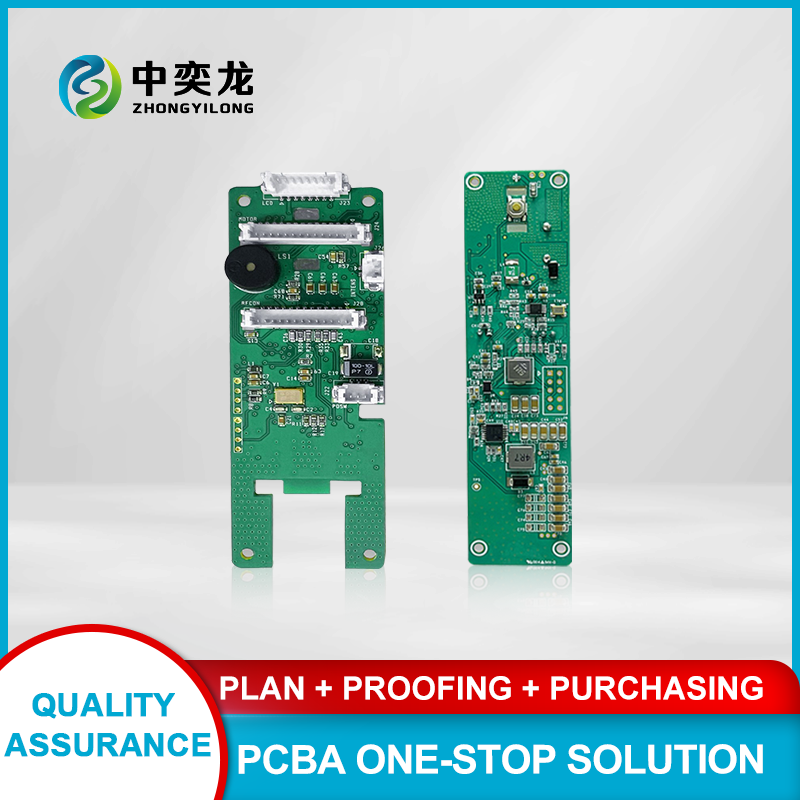
Understanding the Role of PCBA in Blood Pressure Monitors
2025-07-04
Blood pressure monitors are essential medical devices used to measure and track blood pressure levels, playing a critical role in managing cardiovascular health. A key component of these devices is the PCBA, or Printed Circuit Board Assembly, which serves as the backbone of the monitor's electronic functions. Understanding the intricacies of PCBA in blood pressure monitors can provide valuable insights for professionals involved in the design and manufacturing of these critical devices.
The PCBA consists of several integral components, including the printed circuit board, electronic components, and connectors. The design of the PCB must accommodate the specific requirements of blood pressure monitoring, including sensor integration, power management, and data processing capabilities. For instance, the accuracy of the monitor is heavily reliant on the quality of the components used in the PCBA, such as operational amplifiers, microcontrollers, and analog-to-digital converters (ADCs). These electronic components work together to convert analog signals from pressure sensors into digital data that can be displayed for user interpretation.
Furthermore, the manufacturing process of PCBA is crucial for ensuring reliability and performance. Techniques such as surface mount technology (SMT) and through-hole technology are commonly employed in the assembly process. SMT allows for a higher density of components on the PCB, which is particularly beneficial in compact devices like blood pressure monitors. On the other hand, thorough quality control measures must be implemented throughout the PCB assembly process, including visual inspections and automated testing, to ensure that each unit meets the required specifications.
In addition to performance, the design and assembly of the PCBA also impact the overall user experience. For example, a well-designed PCB can enhance the usability of the blood pressure monitor, allowing for features such as Bluetooth connectivity for data sharing with mobile devices. This integration can help patients and healthcare professionals track blood pressure readings over time, improving health management strategies.
Moreover, as the medical device industry continues to evolve, there is an increasing emphasis on miniaturization and energy efficiency. PCBA designers must stay abreast of the latest advancements in technology to incorporate new components that enhance the functionality of blood pressure monitors while reducing their size and power consumption.
In conclusion, the PCBA plays a pivotal role in the effectiveness and reliability of blood pressure monitors. Professionals in the electronics industry should focus on the intricate details of PCBA design, assembly, and testing to ensure the production of high-quality medical devices that can significantly impact patient health outcomes. By understanding the technological underpinnings of PCBA in blood pressure monitors, stakeholders can contribute to the advancement of medical technology and improve patient care.
The PCBA consists of several integral components, including the printed circuit board, electronic components, and connectors. The design of the PCB must accommodate the specific requirements of blood pressure monitoring, including sensor integration, power management, and data processing capabilities. For instance, the accuracy of the monitor is heavily reliant on the quality of the components used in the PCBA, such as operational amplifiers, microcontrollers, and analog-to-digital converters (ADCs). These electronic components work together to convert analog signals from pressure sensors into digital data that can be displayed for user interpretation.
Furthermore, the manufacturing process of PCBA is crucial for ensuring reliability and performance. Techniques such as surface mount technology (SMT) and through-hole technology are commonly employed in the assembly process. SMT allows for a higher density of components on the PCB, which is particularly beneficial in compact devices like blood pressure monitors. On the other hand, thorough quality control measures must be implemented throughout the PCB assembly process, including visual inspections and automated testing, to ensure that each unit meets the required specifications.
In addition to performance, the design and assembly of the PCBA also impact the overall user experience. For example, a well-designed PCB can enhance the usability of the blood pressure monitor, allowing for features such as Bluetooth connectivity for data sharing with mobile devices. This integration can help patients and healthcare professionals track blood pressure readings over time, improving health management strategies.
Moreover, as the medical device industry continues to evolve, there is an increasing emphasis on miniaturization and energy efficiency. PCBA designers must stay abreast of the latest advancements in technology to incorporate new components that enhance the functionality of blood pressure monitors while reducing their size and power consumption.
In conclusion, the PCBA plays a pivotal role in the effectiveness and reliability of blood pressure monitors. Professionals in the electronics industry should focus on the intricate details of PCBA design, assembly, and testing to ensure the production of high-quality medical devices that can significantly impact patient health outcomes. By understanding the technological underpinnings of PCBA in blood pressure monitors, stakeholders can contribute to the advancement of medical technology and improve patient care.
Related News











 WhatsApp
WhatsApp
 E-mail
E-mail